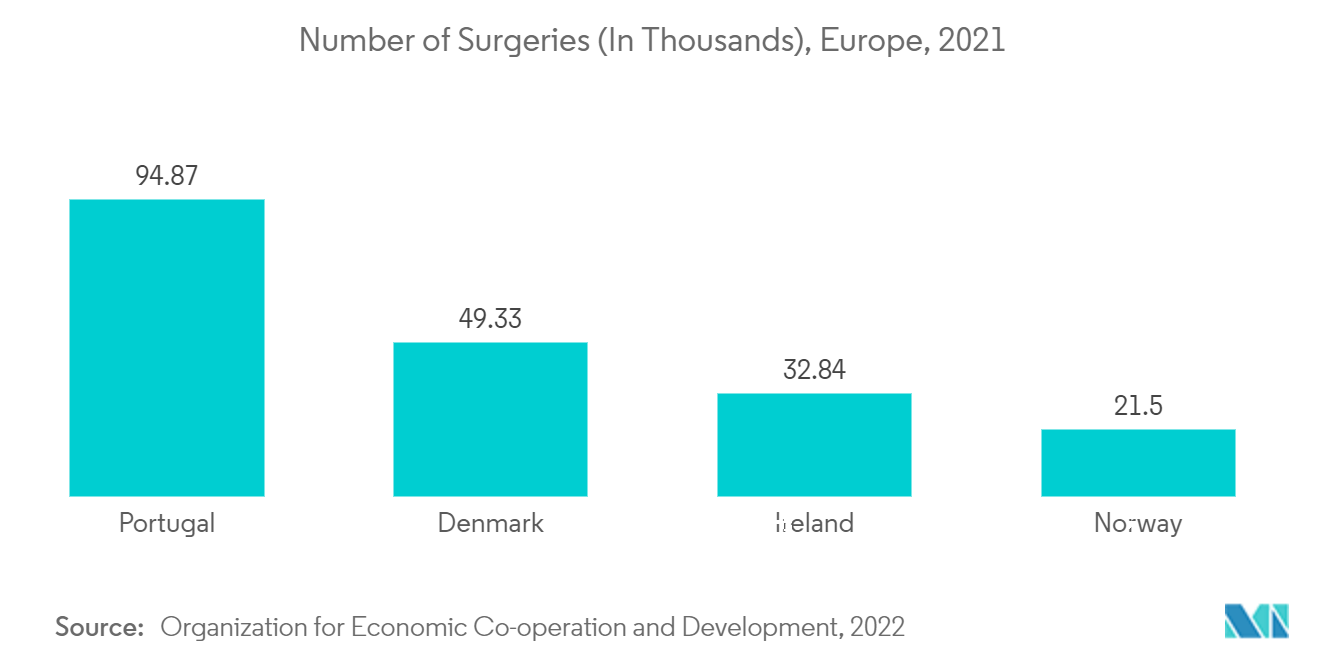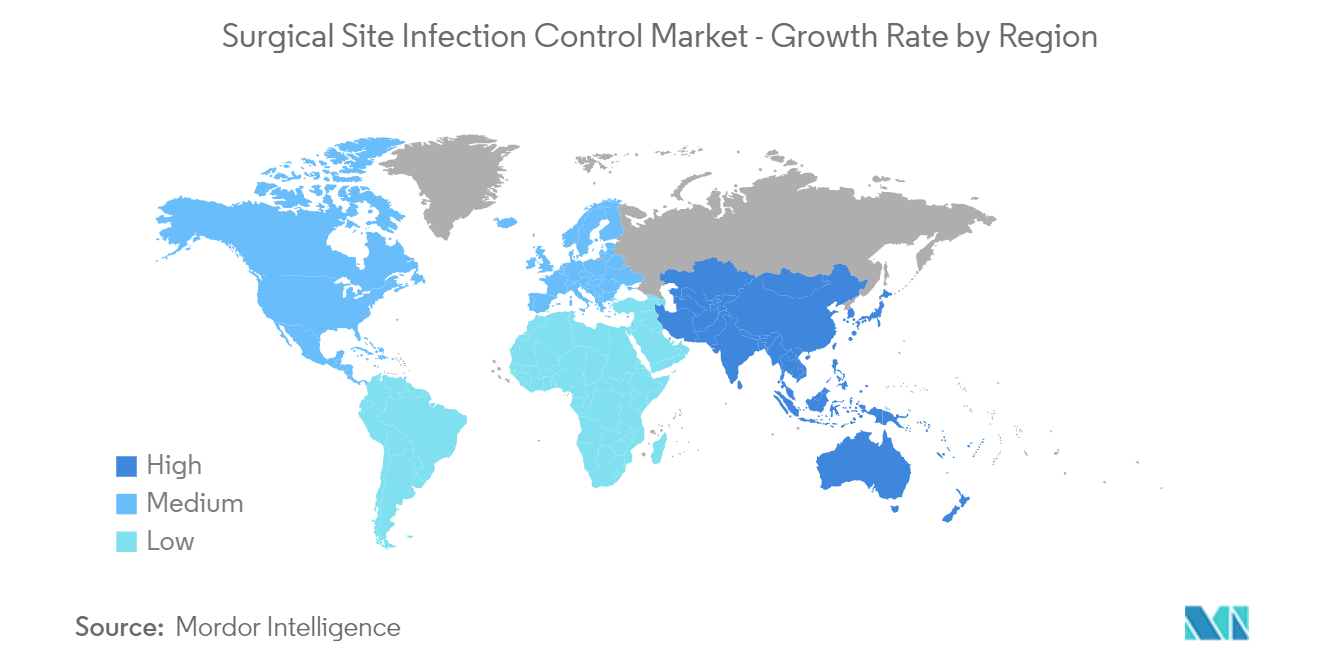Market Trends of Surgical Site Infection Control Industry
This section covers the major market trends shaping the Surgical Site Infection Control Market according to our research experts:
Superficial Incisional Segment is Expected to Exhibit Fast Growth Rate Over the Forecast Period
Only the skin and subcutaneous tissue of the incision are infected in a superficial incisional SSI. This infection occurs only in the areas where the incision was made on the skin.
The rising cesarean surgeries and increasing prevalence of chronic diseases are expected to boost the segment. For instance, According to World Health Organization (WHO) updates from June 2021, cesarean section use continues to rise globally, accounting for more than 1 in 5 (21%) childbirths. If this trend continues, by 2030, the highest rates are likely to be in Eastern Asia(63%), Latin America and the Caribbean (54%), Western Asia (50%), Northern Africa (48%), Southern Europe (47%) and Australia and Newzealand (45%). Thus, the increasing cases of such surgeries have a higher risk of developing surgical site infections, which is expected to increase the demand for surgical site infection control products and boost the market segment's growth over the forecast period.
Additionally, in May 2021, Becton, Dickinson, and Company launched BD Surgiphor Sterile Wound Irrigation System, the first and only ready-to-use aqueous povidone-iodine (PVP-I) irrigation solution that mechanically loosens and removes wound debris. Such launches are expected to propel the growth of the market.
Thus, all the factors above, such as rising surgical site infections and hospital-acquired disorders, boost the segment's growth.

North America Captured the Large Market Share and is Expected to Retain its Dominance
The surgical site infection control market has been dominated by North America, with the United States accounting for the largest share of regional revenue. The increase in hospital stays due to chronic diseases and surgeries, the rising number of hospital admissions, the increasing burden of hospital-acquired infection coupled with the innovative technologies implemented in devices that control infection, and others are expected to boost the market's growth in the region.
SSIs are the most common healthcare-associated infection (HAI) among inpatients in acute care hospitals in the United States (tied with pneumonia). According to the CDC data updated in 2021, about a 24% increase in central line bloodstream infection (CLABSI) and a 35% increase in Ventilator-Associated events (VAE) between 2019-2020. Such a high surgical site infection rate creates the need for Surgical Site Infection Control (SSIC) products and thus propels the growth of the market.
According to 2022 data from the AHA, there were approximately 33,356,853 hospital admissions in 2022. Many of these admissions were due to chronic diseases and critical procedures, like heart bypass surgery. Thus increasing number of hospital admissions is expected to have more SSIs, thereby boosting the market in the region.
Additionally, in February 2021, Penn Medicine opened its new Interventional Support Center (ISC), one of the most prominent instrument processing and surgical supply preparation facilities in Southwest Philadelphia, United States. The ISC is one of the first facilities of its kind in Pennsylvania, where staff will sterilize and package thousands of instruments each day in preparation for surgeries and procedures, from basic scissors and clamps to advanced robotic instruments. Establishing such facilities is also expected to propel the market's growth.
Thus, all factors above are expected to boost the market in the region over the forecast period.


